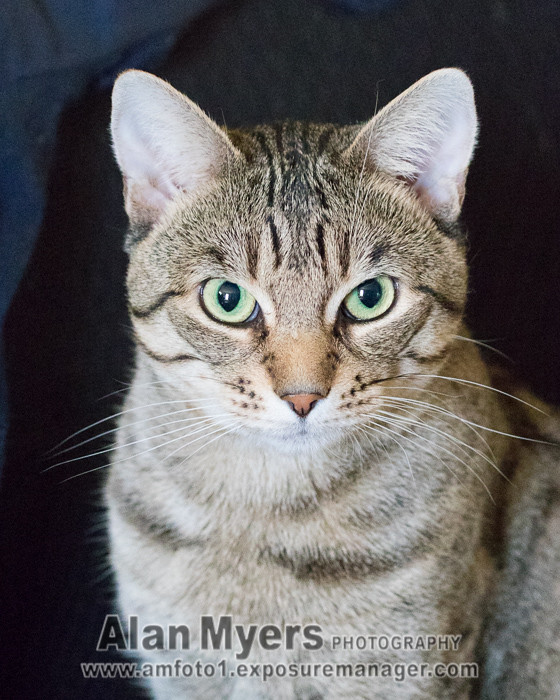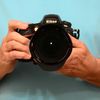Are some canons better at higher ISO than others?
Oct 2, 2017 08:28:09 #
Oct 2, 2017 10:10:53 #
yes
genocolo wrote:
Recently posted a few shots taken with canon 80D and asked for critique. One helpful responder remarked that the ISO at 3200 and at 5000 may have been too high for the 80D to handle comfortably. Did not realize that some Dslrs are better than others at higher ISO. Would mark iv or 5dsr be better and how much? Seems I take a lot of wildlife photos at distance at lower light.
Oct 2, 2017 11:57:09 #
sb wrote:
The Canon 6D is a "not-many-frills" full... (show quote)
The reason a large number of astro-imagers use the Canon 6D...
bwa
Oct 2, 2017 11:57:43 #
amfoto1
Loc: San Jose, Calif. USA
genocolo wrote:
Recently posted a few shots taken with canon 80D and asked for critique. One helpful responder remarked that the ISO at 3200 and at 5000 may have been too high for the 80D to handle comfortably. Did not realize that some Dslrs are better than others at higher ISO. Would mark iv or 5dsr be better and how much? Seems I take a lot of wildlife photos at distance at lower light.
It's not just the camera. High ISO also requires careful technique. IMO it's best to shoot RAW (CR2 in the case of Canon) and the most important thing is to do all you can to avoid underexposure. If you need to increase exposure in post-processing, that will greatly amplify noise. In fact, with various Canon cameras I've used, it's been better to slightly overexpose, then pull back exposure in post.
Newer cameras are a lot better at high ISO than older. The 80D uses one of the "latest and greatest" sensors from Canon. But it's a pretty densely crowded sensor... 24MP on APS-C format. 7D Mark II that I use have a one-generation older 20MP APS-C sensor, lower resolution allowing for higher ISO, but older design that would normally require lower. So to me the 7DII and 80D (which I have minimal experience with), seem about the same. 80D's sensor also appears to have slightly greater dynamic range, which can retain more detail in both highlights and shadows, and allow more "room" for adjustments.
Full frame cameras are typically more high ISO capable. In simple terms, this is because their larger sensors tend to be far less crowded and the individual pixel sites are larger. The less crowded sensors dissipate heat better and have less "cross talk" between individual pixel sites... two key things that cause noise in images.
A Canon APS-C sensor has about 330 square millimeter area. In a 20 to 24MP APS-C camera (20 to 24 million pixel sites), that translates to around 60,000 pixel sites per square mm or more.
In comparison, a full frame sensor is 864 square mm. Original 6D and 1DX Mark II are two of the most high ISO-capable full frame Canon... both approx. 20MP. Those cameras have under 24,000 pixel sites per square mm.
In contrast, Canon 5DS/5DS-R with slightly over 50MP... or more than 58,000 pixel sites per square mm... is not a high ISO model in spite of it's full frame sensor. With pixel density similar to APS-C models, Canon limits that full frame camera to ISO 6400, expandable to ISO 12800. In contrast, the older, original 6D with just over 20MP has up to ISO 25600, expandable to to 102400. The newer 5D Mark IV (30MP) offers 50% more resolution with the same range of ISO. And the newest FF Canon, the 6D Mark II (26MP) with a more modest 30% increase in resolution offers up to ISO 40000, expandable to 102400.
I'm not necessarily saying those ultra high ISOs are usable... especially the "expanded" ISOs that rely upon software interpolation. It depends upon a lot of things, including user expectations and technique, as well as the intended uses of the images being made. You should not just take someone else's word for it... but should test the camera for yourself. Experiment with techniques, research & invest in more sophisticated post-processing noise reduction software, etc. Longer exposures make for more heat at the sensor, and more noise too. (Canon have Long Exposure Noise Reduction... But you need to be aware of how that works. With shots 1 second or longer, when LENR is enabled the camera actually makes two shots... the "real" image first, then a second "blank" image of the same duration with the shutter closed. The 2nd shot is used to identify noise, which is subtracted from the first image. Be aware that LENR shots take twice as long and that if you cancel the 2nd shot, the 1st shot is also discarded. In particular with astrophotography/star shots 1 sec. and longer, I'd turn off LENR out of concern that the camera might confuse stars with noise!)
Judge for yourself. This is a test shot I made with my Canon 7D Mark II at ISO 16000....


The lefthand image is relatively uncropped. The righthand is a cropped detail that shows, yes, there's some noise (cropping is another thing to avoid, BTW, to minimize the appearance of noise). But IMO it's pretty well controlled and the image is surprisingly usable. It was lit by a single 60 watt CFL bulb and a small window, both about 10 or 12 feet from the subject. It was shot RAW with camera was set to default NR. RAW conversion was done in Lightroom, with NR set to default. I frequently use 7DII as high as ISO 3200... with a bit of extra care at 4000, 5000, 6400.... and with greater care and extra post-processing at 8000, 10000, 12800, 16000. I don't think I've ever used those cameras' expandable ISO 25600 or 51200. With other cameras I've occasionally used expandable ISOs in a pinch, perhaps with black & white conversions (which tolerate high ISO noise better than color images).
Do the same with your camera.... shoot some high ISO tests and, rather than freaking out about noise, figure out realistic ways of utilizing the images in spite of the noise and methods of dealing with it.
Which brings me to a final point.... Way too often I think people are massively overly critical of their images. When viewing an image from a 24MP camera "at 100%" on most computer monitors, that's like making a 40x60" print and then viewing it from 18 or 20" away. OF COURSE it looks like crap! But are you really planning to make five foot wide prints? Probably not (and prints are usually sharper and better detailed than computer monitors anyway). So as far as noise is concerned it probably makes more sense to back off to viewing the image at 50% or 33% or even 25%. Sure, you may want to magnify an image to 100%, 200% or even higher for retouching.... But when it comes to evaluating it for noise (and sharpness, and focus accuracy), give yourself a break and look at it in more realistic terms. An 8x12" print from a 24MP is less than 25%! (Note: This assumes you're good about "filling the viewfinder" with your subject and don't need to do a whole lot of cropping to your images, as a rule.)
Oct 2, 2017 12:58:08 #
genocolo wrote:
Recently posted a few shots taken with canon 80D and asked for critique. One helpful responder remarked that the ISO at 3200 and at 5000 may have been too high for the 80D to handle comfortably. Did not realize that some Dslrs are better than others at higher ISO. Would mark iv or 5dsr be better and how much? Seems I take a lot of wildlife photos at distance at lower light.
Yes, a 5D (MIII for example) would handle high ISO's a lot better (by a mile)! Full framers are better in general in low light situations, but there are big differences between different full frame models as well!
Oct 2, 2017 13:29:52 #
Great Advice Alan!!!
Best,
Todd Ferguson
Best,
Todd Ferguson
amfoto1 wrote:
It's not just the camera. High ISO also requires c... (show quote)
Oct 2, 2017 14:09:43 #
Based on my own dslr's this chart seems quite accurate. Interestingly, the Nikon that scores best of all the FF dslrs of all makes is the D750.
TriX wrote:
Yes. In general, the full frame Canons (5D and 1D series) are typically ~ 1 stop better in terms of noise at high ISO. For actual data, go here, and plug in the cameras you’d like to compare: http://www.photonstophotos.net/Charts/PDR.htm
Oct 2, 2017 14:16:02 #
As several people have said her the Canon 6D is pretty amazing in low light. For various reasons I had both it and the Nikon D600 at the same time, and while a lot of people argued the Nikon was best, the 6D could find focus in the dark when the D600 would hunt and hunt. (only partially related to noise), but if you can't get the shot, what's the point of controlling noise at high ISOs?) And, the 6d controls noise very well. The 5 d mk IV is supposed to be better, but I haven't yet produced what I could with the 6D. The 6D is also light and relatively inexpensive. You might want to try it. The AF isn't as good as the 80D, but the center point works well. I am spoiled by my canon full frames in comparison to the not so great noise control on the Sl/1 (which I use kayaking, hiking, etc). Even so, now that I am reminded that not all cameras are as good, I am finding that the Sl/2, which has the same sensor as the 80, I think, is also pretty good.
Oct 2, 2017 14:26:11 #
leftj
Loc: Texas
PhotoKurtz wrote:
I don't know the answer to your question, but I share your wildlife shot issue. If I'm not shooting for stock photos I'll bump the iso to capture that moment and not fret about the grain.
Reminds me of an old Navy joke where she asked, "who you gonna please with THAT?" and he answered... "Me!"
Reminds me of an old Navy joke where she asked, "who you gonna please with THAT?" and he answered... "Me!"
Is that a camera joke?
Oct 2, 2017 15:24:59 #
I think it relates to depth of field.
leftj wrote:
Is that a camera joke?
Oct 3, 2017 14:23:15 #
bclaff
Loc: Sherborn, MA (18mi SW of Boston)
bwana wrote:
I've always equated photosite size with low light performance, i.e.: the larger the photosite, the better the low light performance. DxO Mark shows Low Light performance for all the cameras they test; good spot to check.
For normalized measures, the one we normally care about, what matters is sensor size rather than photosite size.
FWIW, PhotonsToPhotos also has a Low Light ISO measure.
It's listed in the sort-able table below the interactive Photographic Dynamic Range (PDR) (www.PhotonsToPhotos.net/Charts/PDR.htm) chart.
Comparisons are best made with the EV (stops) value.
If you want to reply, then register here. Registration is free and your account is created instantly, so you can post right away.


